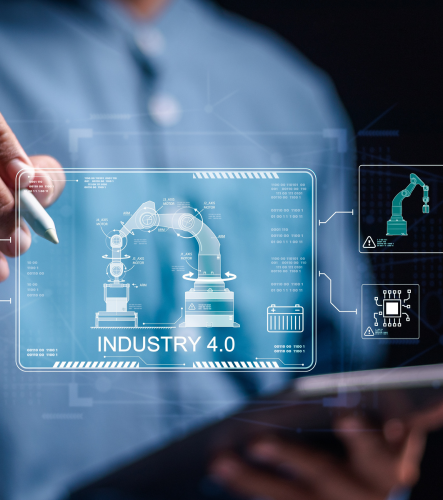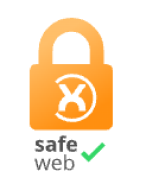Industry 4.0 is no longer an emerging trend; it has become a key strategic factor in highly demanding sectors such as food and beverage. Traceability, food safety, operational efficiency, and regulatory compliance are critical elements that can only be robustly guaranteed through the integration of smart digital technologies.
Industry 4.0 as a Strategic Necessity
The implementation of Food Industry 4.0 technologies allows production plants to monitor all processes in real time: from the receipt of raw materials to the final pallet labeling. This translates into comprehensive control of the operational and logistics flow, improves product quality, and ensures compliance with the most demanding international regulations.
Faced with the dilemma between full or progressive digitalization, in-plant experience and market results point to a staggered and planned adoption as the most efficient option, especially for medium-sized companies. This strategy allows for:
- Modernizing without stopping production.
- Scaling according to actual needs.
- Ensuring that each step is oriented toward the long term.
- Optimizing resources with modular, scalable systems that are compatible with future technologies.
Market Evolution of Industry 4.0 in Food and Beverage
This past year marked a turning point in the adoption of digital technologies by the food and beverage sector. It’s no longer just about producing more, but about producing better: with more control, greater traceability, and increased operational efficiency.
We’ve observed a clear shift in investment decision-making. Companies are no longer focusing their resources solely on expanding production capacity, but on strengthening their processes, ensuring quality, and responding to new challenges in the global market—from product customization to international export standards.
This context has generated a growing demand for:
- Solutions that ensure regulatory compliance, especially regarding traceability and labeling in accordance with standards such as GS1.
- Robust and versatile systems, capable of operating in demanding environments such as cold storage, humid atmospheres, or multi-format lines.
- Technology that combines precision and adaptability, ready to integrate data and function as part of a connected architecture.
This momentum has solidified the growth and expansion of our Print & Apply solutions, which have proven to be a key component in the evolution toward smarter, more resilient, and connected factories.
“The real revolution in the food and beverage industry is not about producing more, but producing better: with data, traceability, and technology that adapts in real time.”
Artificial Intelligence and Other Key Technologies in Food Industry 4.0
Applications of AI in Labeling and Production
Artificial intelligence (AI) is gaining unquestionable prominence in the digital transformation of the food and beverage industry. Its ability to analyze data in real time, anticipate failures, and make automated decisions makes it a strategic tool within Industry 4.0.
In the packaging sector, AI is already being effectively applied in various critical processes. Its most notable uses include:
- Optimizing label cycle times based on actual production line conditions.
- Detecting failure patterns in the process and anticipating technical interventions, reducing downtime.
- Dynamically adjusting printing parameters based on environmental variables such as temperature, humidity, or the type of packaging surface.
However, AI does not operate in isolation. For its implementation to be effective, it must be integrated into a broader technological ecosystem where other essential tools converge.
Technological Ecosystem That Enhances AI
- Industrial IoT (IIoT): Smart sensors that collect, transmit, and analyze data in real time, enabling functions such as predictive maintenance and remote monitoring.
- Cyber-physical systems: Allow machines such as labelers to self-manage, process information in real time, and respond autonomously to production line conditions.
- Big Data and advanced analytics: Analysis of large volumes of data to optimize processes, improve product quality and traceability, and make evidence-based decisions.
- Industrial cybersecurity: Active protection of critical production system data from external threats—especially relevant in connected environments.
The combination of these technologies creates the ideal environment for intelligent, safe, flexible production that is ready to respond quickly to market demands.
Is It Time to Upgrade Your Production Line?
In the midst of the transition to Industry 4.0, many food plants continue to operate with equipment that was once efficient, but now poses an obstacle to competitiveness.
A production plant is considered technologically obsolete when:
- Its equipment cannot communicate with each other; there is no machine-to-machine connectivity.
- It lacks an industrial network infrastructure, with no access to real-time data.
- It is not possible to capture, visualize, or analyze operational information centrally.
- It cannot be integrated with higher-level systems such as MES or ERP.
In this context, for example, a Print & Apply labeling system that is not compatible with industrial communication protocols like OPC-UA or MQTT already represents a barrier to advancing toward a connected, traceable, and efficient production model.
“If you recognize one or more of these situations in your plant, it’s time to plan a strategic and scalable modernization of your production line.”
Our Latest Technology for Connected and Efficient Production
In response to this need, at United Barcode Systems we have developed the new APL 80 series by United Barcode Systems, an advanced pallet labeling solution designed specifically for industrial environments in the food and beverage sector. This next-generation technology, with both remote and local interface (non-web – HMI) and predictive maintenance functions, has been designed in accordance with GS1 coding and traceability guidelines.
Its most notable features include:
- Automatic detection of correct label application.
- Barcode and QR code print verification.
- Early alerts for low ribbon and label levels or compressed air failures.
- Direct integration with MES and ERP systems for unified, real-time traceability.
We are also researching solutions that further enhance automation, such as intelligent error detection in packaging, assisted remote maintenance systems, and smart applicators capable of adjusting position or pressure without human intervention for products that vary in size, shape, or surface.
Looking Ahead: Technological Challenges in the Packaging Sector
In the context of Industry 4.0, the industrial packaging sector—especially in labeling, coding, and marking— plays a fundamental role in the value chain of the food and beverage industry. However, this strategic position also brings a series of key technological challenges that must be addressed to move toward truly smart and sustainable production.
- True interoperability:Many manufacturers still work with closed systems. Industry 4.0 requires open ecosystems, where labelers integrate seamlessly with robots, AGVs, scanners, and vision systems.
- Extreme adaptability: With the growing demand for personalized food (diets, small batches, multilingual exports), labeling equipment must adapt in seconds to changes in product or customer.
- Sustainability and energy efficiency: We are constantly developing solutions that consume less energy and optimize the use of consumables (ribbon, liner-free paper).
- Training and digital transition: Training staff to operate advanced technologies will be just as important as the technology itself.






